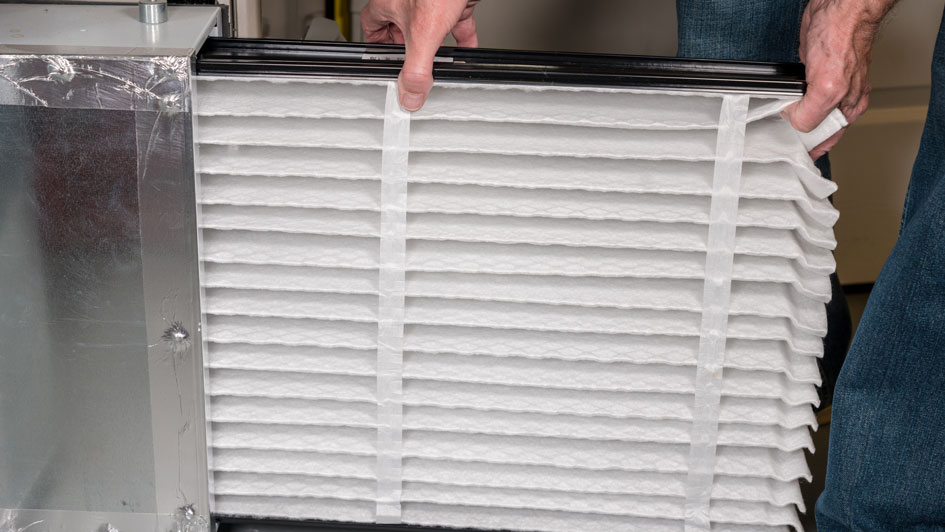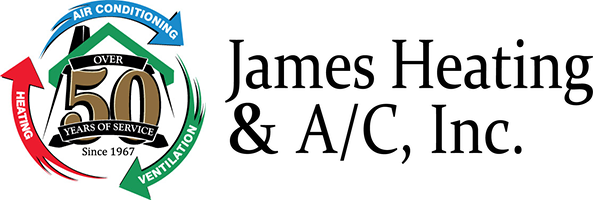
Selecting the correct furnace filter and changing it when it gets dirty is as important to your HVAC system as changing the oil is to your car. Each plays a crucial function in keeping its system running safely, efficiently and for a long time.
An overused furnace filter loses its effectiveness, permitting potentially harmful particles to circulate through your home. It also limits airflow, which can damage your furnace and reduce its life span.
Ensuring your furnace uses a clean filter that is appropriate for your needs is not merely about keeping your furnace operating efficiently. It’s also about creating healthy indoor air quality for your home.
The quality of the air your family breathes is important to the heating specialists at James Heating & A/C, Inc. We've long worked with an eye on enhancing indoor air quality in Lexington. Here, we’ve answered common questions about HVAC filters, including that particularly tricky question of what direction do you point a filter in your furnace or air conditioner?
When to Replace the Air Filter in Your Furnace
Experts stress it's important to replace dirty air filters in a furnace or air conditioner routinely. Soiled filters cause the system to worker harder than it should because it takes extra effort to force air through the plugged-up filter.
Officials recommend examining your furnace filter every 30 days and replacing it if it’s dirty. You’ll know if your filter needs changing because it will be gray or black from dirt or dust. Those who have pets that shed will very likely have to replace their furnace air filter more often, because an effective air filter will trap pet hair circulating in a home.
Where Is the Air Filter in My Furnace?
In general, a furnace air filter is commonly located in the return air duct or blower compartment before the return air goes back into the furnace. This ensures air flowing into the system is filtered before it moves through the furnace components and is heated.
Depending on the furnace model, the filter may be found on the right, left, bottom or in some cases, inside the furnace. It's typically housed inside of a slot, frame or cabinet for simple access and replacement. Always refer to your furnace's owner manual for important information about filter location of the furnace in your home.
Is a Furnace Filter the Same as an Air Filter?
The easy answer is, yes. In HVAC, a furnace filter and an air filter or air conditioning filter are basically identical. While they might be called different things based on the current season— hot or cold—they are all filters that clean the air in your home.
They each eliminate dust, allergens, bacteria and other airborne debris from the air that is drawn into the furnace and air conditioning system, making certain the air distributed throughout your home is clean and safe.
What Is the MERV Rating System and What MERV Rating Should I Have?
Once you track down your old furnace filter and decide when it should be substituted for a clean one, it’s time to pick a replacement. That means determining the level of filtration that you need. One approach to this is by selecting an appropriate MERV rating for your needs.
MERV stands for Minimum Efficiency Reporting Values. The MERV rating indicates the effectiveness of air filters at trapping airborne molecules. The rating scale ranges from 1 to 20, with bigger numbers indicating the power to filter tinier particles.
Experts say a filter with a MERV rating between 8 and 13 offers an appropriate balance between having good indoor air quality without overly restricting airflow. However, people with some health conditions might need to use a filter with a higher MERV rating.
How to Place the Air Filter in a Furnace or Air Conditioning System
Positioning an air filter in a furnace or air conditioner properly is crucial for the efficient operation of the system. Air filters have a particular direction, indicated by an arrow written on the side of the filter frame. The filter should be put in with this arrow pointing toward the furnace or air conditioner, which is the direction of the airflow. If you're doubtful about the airflow direction, it may be helpful to remember that air always moves from the return duct and then to the heat or cooling source. Therefore, be sure that the arrow points in the direction of the furnace or air conditioning unit.
Many people have difficulty remembering which direction to face their system's air filter. To help remember, consider taking a picture with your mobile phone after the filter has been correctly installed by a professional. Or, you also could ask a technician to use a marker to write on the outside of your furnace which direction the filter should point. A handy time to do this is during a routine furnace maintenance visit.
How to Change a Furnace Air Filter
Replacing the filter on your furnace or AC is a simple process. Here is a step-by-step list of how to retreive a dirty air filter and exchange it for a new one:
- Turn off your furnace: Make sure to turn off your furnace before starting the process.
- Find the furnace filter: Typically, the filter is located inside the furnace or in the air return vent. Make note of which direction the arrow points on the filter, because you’ll want the arrow on the replacement filter to point similarly.
- Take out the old filter: Be careful not to knock out any dust or debris.
- Document the date: Write down the date you replaced the filter on the new filter's frame. This will make it easier to keep track of when it's time for you to change it again.
- Insert new filter: Put in the new filter with the arrow pointing toward the furnace, which is the direction of airflow and should be the same direction the arrow pointed on the old filter you are replacing.
- Secure the filter: Make sure the new filter fits nicely and close any latches or clips that secure it in place.
- Turn on your furnace: Once the clean filter is properly in place, you can turn your furnace back on.
Will a Dirty Air Filter Cause a Furnace Not to Work?
The simple answer is, yes, a dirty air filter can cause a furnace to quit working or limit its lifespan. Changing your furnace or air conditioner filter is one of the best things you can do to keep your system operating efficiently.

